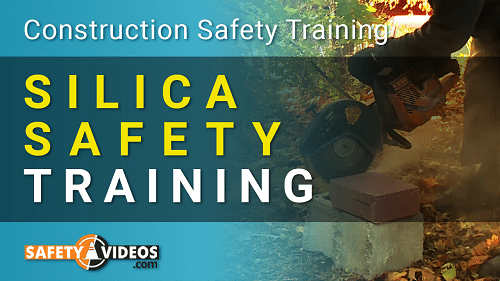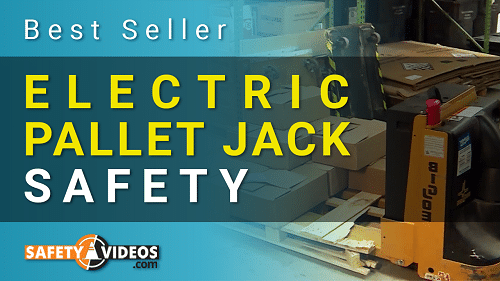Aerial Lift Certification – [Complete Video Training Kit]
$239
OSHA Standard: 1926.453
Our aerial lift safety training kit follows OSHA and ANSI guidelines to ensure that your lift operators follow safe practices. It includes a leader’s guide to help your trainer facilitate the session, an employee quiz to test comprehension, and a printable certificate of completion to document the training. You can also sign up for online aerial lift training, which allows trainees to access training any time on any device.
The aerial lift training is available in English and Spanish and can be completed in as little as one hour.
Who Needs Aerial Lift Training?
Anyone who will operate an aerial lift needs proper training. OSHA standard 1926.453 states that only authorized people should operate an aerial lift, which is defined as any vehicle-mounted device used to elevate personnel. Aerial lifts include boom lifts, aerial ladders, and vertical towers.
ANSI/SAIA A92.22 and A92.24 provide further guidelines for the safe use of mobile elevating work platforms (MEWP) and training requirements including identifying hazards, using fall protection, controls, inspections, and other safety procedures.
You can also access our aerial lift certification course online.
Contact us for more information about our online learning dashboard.
How to Get Aerial Lift Certified with Our Course:
ANSI A92.24 requires that operator training include both theory training, which can happen in a classroom or online, practical hands-on training, and an aerial lift operator evaluation. Training must be given by a qualified person who is experienced with the specific type of MEWP for which an operator needs training and who has knowledge of the laws and best practices.
To certify your operators, follow these steps:
- Purchase our course. USB and DVD will be shipped out the same business day if purchased before 7:00 pm EST. Online training courses allow you to set up a manager and employee dashboard to easily enroll trainees and track training completion.
- Have the operator complete the course and pass the quiz. Employees should review the aerial operator certification training video and accompanying materials, then pass the quiz.
- Give the trainee a practical assessment. Trainees must operate the MEWP safely on site and show proficiency with inspections, planning the route of travel, setting up, operating, and parking and securing the machine.
- Print the certificate of completion. Training and certification must be documented. The certificate of completion proves compliance with the standards.
What Our Aerial Lift Certification Training Covers:
Our expert team has made sure that the content is easy to digest, using clear visuals, real-life examples, and simple language. This ensures that your team will not only grasp the concepts quickly but also retain the knowledge for the long term. After taking the course, your employees will understand these concepts required by ANSI regulations.
Aerial Lift Fundamentals
- How OSHA and ANSI define lifts and their training requirements
- The categories of lifts outlined by ANSI
- The types of aerial lifts (extensible boom platforms, aerial ladders, articulating boom platforms, vertical towers, etc.)
- The four basic components of an aerial lift (base, lifting mechanism, bucket or platform, controls)
- The difference between an operator and an occupant
- How an aerial lift differs from a scissor lift
Aerial Lift Operation
- How to perform a pre-shift inspection on the lift before it is used
- How and when to perform equipment and worksite inspections
- How to calculate the weight of a load being lifted and how to determine the lift is capable of the load
- How to use a dead man switch
- How to maneuver and use controls
Aerial Lift Safety
- General safety best practices
- ANSI’s three jobsite safety components: Safe Use Program, risk assessment for each job, a rescue plan for each lift
- How to recognize and avoid unsafe conditions
- The personal fall restraints or fall arrest devices required when operating a manlift
- The fall-protection safety protocols and personal protective equipment (PPE) for operating an aerial lift
- ANSI’s requirement for each new lift to have a gated entrance, not a chain for an entrance guard
- The safety devices required on newly manufactured aerial lifts (sensors that will stop the lift if the weight limit has been exceeded, wind speed sensors that will alert when the lift should be lowered in windy conditions, and more)
- How to operate around electrical lines
- Types of tires required by surface
How Much Does Aerial Lift Certification Cost?
Our USB and DVD kit is a one-time purchase for $239, and it can be reused for multiple employees. Our online safety videos annual subscription costs $995 for 1 to 50 employees and $1,495 for 50 to 100 employees. This gives you unlimited access to over 250 safety videos in English and Spanish.
This Complete Aerial Lift Training Program Includes These Items:
- Full-length Aerial Lift Certification video
- Employee quiz and answer sheet
- A Printable Certificate of Completion. You can print as many copies of the certificate as you need
- Printable “Practical Assessment” Form for the “Hands-on” Evaluation of the operator’s skill in operating the manlift.
- Printable operator wallet cards to indicate your operators are certified
- An aerial lift pre-shift inspection sheet that you can reprint and reuse as many times as you need
- A printable training sign-in sheet to keep track of your training program
Aerial Lift Safety Training Video – Full Length Preview:
FAQs on Aerial Lift Training
Answered by our in-house OSHA Authorized Trainer – Jason Hessom

Have a question for us? Give us a call at 800-859-1870 ext 2 or, Contact Us Via Email
Aerial lift training usually lasts for three years, though some employers require annual renewal. However, more frequent retraining may be needed if the operator’s performance deteriorates, the operator hasn’t operated a MEWP for an extended period of time, they are using new or different machinery, or they were involved in an accident or near accident. Our USB kit, DVD kit, or online course fulfills theory training requirements, whether operators need a refresher or are brand new to training certification.
All MEWPs require training and certification and operators should be trained on the specific type of lift they are using.
ANSI classifies MEWPs by group and type. Group A are lifts that move vertically, but only within its tipping lines, like manlifts. Group B can move vertically and beyond its tipping lines, like cherry pickers. Within each group there are three types. Type 1 can only be moved in the stowed position. Type 2 can be controlled by the chassis while the platform is elevated. Type 3 can be controlled from the work platform.
47 reviews for Aerial Lift Certification – [Complete Video Training Kit]
| 5 star | 55% | |
| 4 star | 42% | |
| 3 star | 2% | |
| 2 star | 0% | |
| 1 star | 0% |
![Aerial Lift Certification - [Complete Video Training Kit]](https://www.safetyvideos.com/wp-content/uploads/2022/02/products-1015G-2-150x150.png)







It gets the job done and doesn’t even make the guys and girls fall asleep during the training.
Covered manlifts very well.
Thorough coverage of fall protection requirements when using an aerial lift
Step‑by‑step instructions on safe aerial lift use.